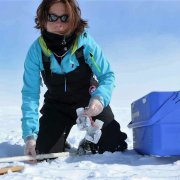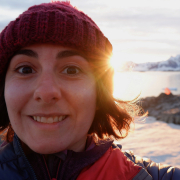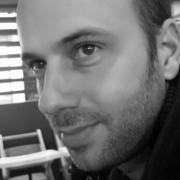Copyright : Laboratoire LEMAR- 2018
Aude Leynaert
International
ISBlue ANR-17-EURE-0015,
RhiCycle : ANR-19-CE01-0006,
French National program LEFE (Les Enveloppes Fluides et l’Environnement) ROSI
Start Date
07/04/2025
End Date
07/04/2025
Infos sur la campagne sur le site de la Flotte Océanographique Française
- What is the latitudinal richness and the ecologic structure of the siliceous planktonic assemblages? Do we find the same species as those reported about 30 years ago (Swanberg et al., 1986) and in the sediment ?
- Can we link the biodiversity and biomass of rhizarians and of the microplankton community to environmental factors (nutrient concentrations, temperature, depth, light, etc.)? Diatoms and rhizarias, these 2 communities do they co-vary or do they tend to exclude each other? How do they respectively contribute to the silica?
Photo gallery
[av_slideshow img_copyright='left' size='no scaling' control_layout='av-control-default' slider_navigation='av-navigate-arrows av-navigate-dots' nav_visibility_desktop='' nav_arrow_color='' nav_arrow_bg_color='' nav_dots_color='' nav_dot_active_color='' img_copyright_font='' av-desktop-font-img_copyright_font='' av-medium-font-img_copyright_font='' av-small-font-img_copyright_font='' av-mini-font-img_copyright_font='' img_copyright_color='' img_copyright_bg='' animation='slide' transition_speed='' autoplay='false' interval='5' img_scale='' img_scale_end='10' img_scale_direction='' img_scale_duration='3' img_scale_opacity='1' conditional_play='' img_scrset='' lazy_loading='disabled' alb_description='' id='' custom_class='easy-slider-text' template_class='' av_uid='' sc_version='1.0'] [av_slide id='202574'][/av_slide] [av_slide id='202572'][/av_slide] [av_slide id='202001'][/av_slide] [av_slide id='201999'][/av_slide] [av_slide id='201995'][/av_slide] [av_slide id='201993'][/av_slide] [av_slide id='201991'][/av_slide] [av_slide id='201989'][/av_slide] [/av_slideshow]Laboratory Members
Contributors
Fabrice Not, Directeur de recherche CNRS, Station Biologique de Roscoff, France
Natalia Llopis Monferrer, Post Doctorante, Monterey Bay Aquarium Research Institute (MBARI), California, USA.
Claudie Marec, Ingénieure de recherche, IUEM, UAR 3113, Plouzané, France
Emmanuel Augereau, Ingénieur de recherche, IUEM, UAR 3113, Plouzané, France.
Nicolas Djeghri, Post doctorant, Marine Biological Association of the United Kingdom (MBA), Plymouth, UK.
Jean Luc Baradat, Ingénieur, compte C02, Brest
Oscar Chuberrer, photo reporter, Brest











